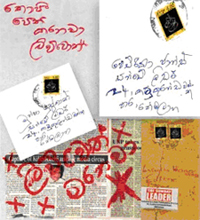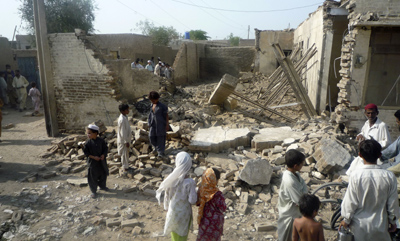Asia
2009
Toronto’s Citizen Lab uses forensics to fight online censors
A basement in the gray, Gothic heart of the University of Toronto is home to the CSI of cyberspace. “We are doing free expression forensics,” says Ronald Deibert, director of the Citizen Lab, based at the Munk Centre for International Studies. Deibert and his team of academics and students investigate in real time governments and…
Chinese authorities detain Uighur Web site managers
New York, October 30, 2009—Chinese police have reportedly arrested two Uighur journalists who published online about Uighur issues in Xinjiang, the Committee to Protect Journalists said today. Chinese authorities blamed local and international Uighur Web sites for fueling July’s ethnic violence, according to international news reports.

Death threats sent to paper of slain editor in Sri Lanka
New York, October 28, 2009—The Committee to Protect Journalists is greatly concerned by ongoing threats to Sri Lanka’s journalists and media organizations. Anonymous letters with death threats, at left, recently sent to Sunday Leader Editor-in-Chief Frederica Jansz and News Editor Munza Mushtaq echo those that ended in the death of the paper’s founder, Lasantha Wickramatunga,…
Video Report: Portraits of the Fallen
In “Portraits of the Fallen,” a video introduction to CPJ’s database of killed journalists, María Salazar-Ferro examines the circumstances in which reporters, photographers, editors, and other journalists have died on duty. Because hundreds of journalists have been murdered in reprisal for their work, CPJ is leading a Global Campaign Against Impunity. (4:11) Visit our database of…
On dangerous assignments, risk becomes ‘normal’
David Rohde’s gripping five-part series on his abduction in Afghanistan and Pakistan ends today with his dramatic escape from his abductors. His series—and the reaction to it—bring into high relief the challenges that journalists face as they confront growing risk around the world. Rohde, for example, felt the need, both in his article and in…

A memorial to killed journalists, a call to action
We’ve launched a new section of our Web site, and we hope you take a few minutes to read some of its pages. There is one, for example, on Russian reporter Natalya Estemirova, who dared to examine human rights crimes in Chechnya. Another is devoted to Francisco Javier Ortiz Franco, a Tijuana newspaper editor who…

Government, media can limit risk to journalists
The fighting along the border in Pakistan is a classic counter-insurgency: a large military force trying to oust an entrenched group from its base. Such armed conflict will always be risk-filled—especially for local journalists—but government leaders, military officials, and media executives can take basic steps to improve security.

In Pakistan’s frontier, echoes of a 2006 murder
Local reporters like those in Federally Administered Tribal Areas, Swat, and Mingora are crucial to accurate, fully formed news coverage. Their importance was evident in August, when reports began to emerge that prominent Taliban leader Baitullah Mehsud had been killed by a U.S.-launched missile apparently fired from an unmanned drone over South Waziristan in the…